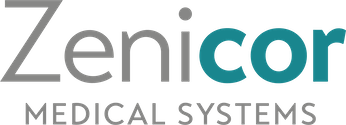Screening for atrial fibrillation
According to the WHO [1] screening is defined as the presumptive identification of unrecognized disease in an apparently healthy, asymptomatic population by means of tests, examinations or other procedures that can be applied rapidly and easily to the target population. A screening program must include all the core components in the screening process from inviting the target population to accessing effective treatment for individuals diagnosed with disease.
Screening for atrial fibrillation can be performed in several different ways. In case of opportunistic screening, screening tests are taken when a patient visits the healthcare for a different reason than just for the purpose of screening. In systematic screening, a population is actively invited to screening.
Between 2014 and 2018, authorities in several countries, including Britain, Ireland, the United States and Sweden, have evaluated whether a national screening program for atrial fibrillation should be introduced. In their evaluations, all have concluded that a National Screening Program today does not have enough scientific evidence to be recommended. In particular, evidence is sought indicating that the episodes of atrial fibrillation identified through screening mean the same stroke risk as the atrial fibrillation detected in routine care in patients with and without symptoms [2, 3, 4, 5]. However, everyone is looking forward to resuming the question when further evidence is added.
The European Society of Cardiology (ESC) 2020 Guidelines for the management of atrial fibrillation (AF), recommends opportunistic screening for AF by pulse taking or ECG rhythm strip in patients >65 years of age. In addition, the guidelines included a recommendation on systematic screening with ECG in 75-year-olds (and older) or individuals at high stroke risk should be considered. [6].
In 2016, the consensus group “AF-SCREEN International Collaboration” was founded, which gathers over 100 experts in atrial fibrillation and atrial fibrillation screening from more than 30 countries worldwide. The group has had two meetings; 2016 in Rome and 2017 in Barcelona and in 2017 they published with a consensus document (so-called Whitepaper for screening), highlighting a number of important topics around screening. The group, among other things, raises the risk of stroke in screening-detected atrial fibrillation and points out that screening-detected atrial fibrillation is not a benign condition. It also raises intermittent single-lead ECG solutions as a preferred screening method based on the fact that the method provides an ECG where diagnosis can be made and the cost-effectiveness of the method [7].
References
- World Health Organisation, Screening. http://www.who.int/cancer/prevention/diagnosis-screening/screening/en/ Downloaded 2018-01-18
- Socialstyrelsen (2017) Screening för förmaksflimmer i syfte att förebygga stroke – Rekommendation och bedömningsunderlag.
- UK National Screening Committee (2014) Screening for Atrial Fibrillation in People aged 65 and over A report for the National Screening Committee
- Health Information and Quality Authority (2015) Health technology assessment (HTA) of a national screening programme for atrial fibrillation in primary care.
- U.S. Preventive Services Task Force (2018) Screening for Atrial Fibrillation With Electrocardiography: An Evidence Review for the U.S. Preventive Services Task Force. Draft
- European Society of Cardiology. 2020 ESC Guidelines for the management of atrial fibrillation. https://www.escardio.org/Guidelines/Clinical-Practice-Guidelines/Atrial-Fibrillation-Management
- Freedman, B. et.al. Screening for Atrial Fibrillation A Report of the AF-SCREEN International Collaboration. Circulation. (2017) 135:1851-1867

